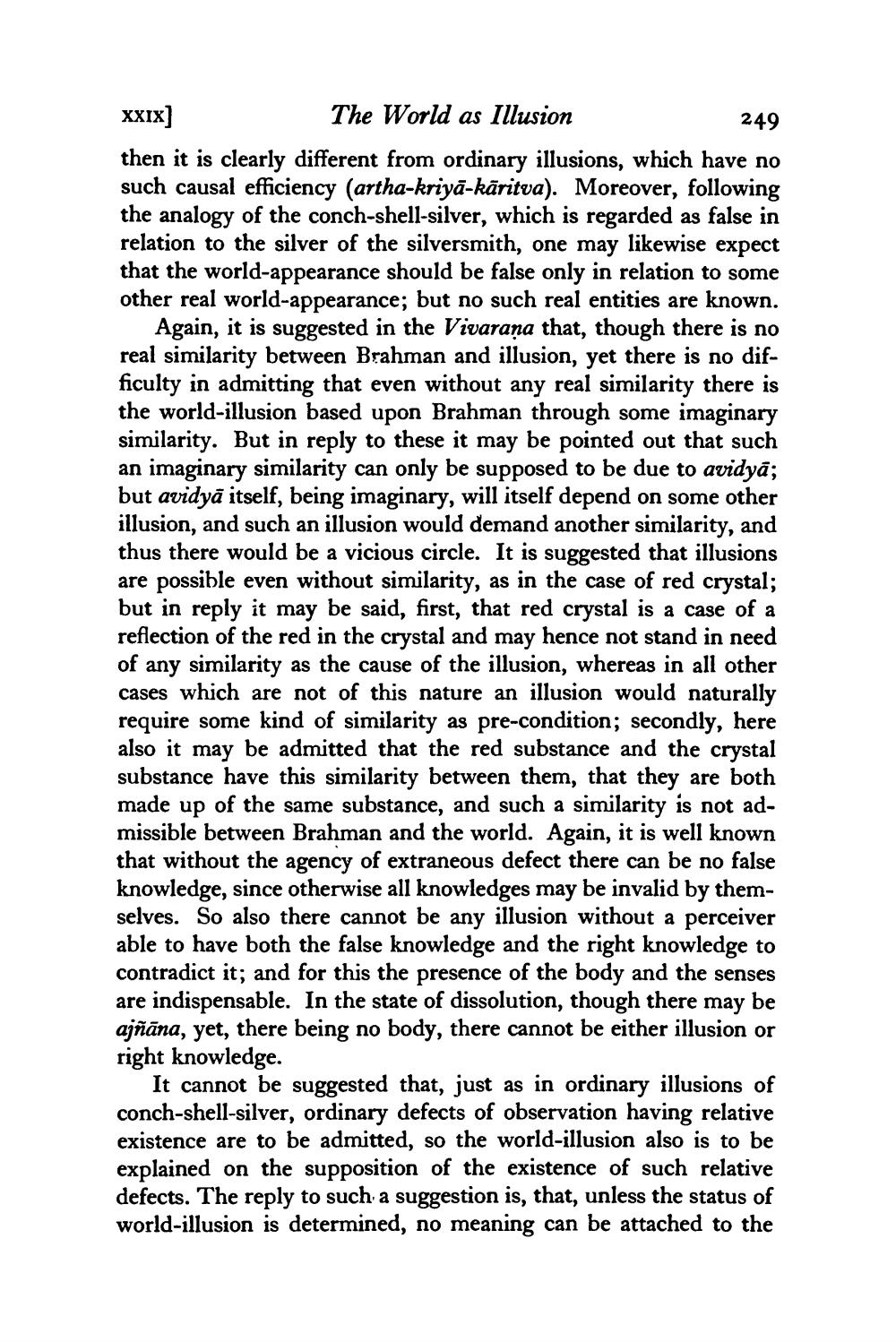________________
XXIX The World as Illusion
249 then it is clearly different from ordinary illusions, which have no such causal efficiency (artha-kriyā-kāritva). Moreover, following the analogy of the conch-shell-silver, which is regarded as false in relation to the silver of the silversmith, one may likewise expect that the world-appearance should be false only in relation to some other real world-appearance; but no such real entities are known.
Again, it is suggested in the Vivarana that, though there is no real similarity between Brahman and illusion, yet there is no difficulty in admitting that even without any real similarity there is the world-illusion based upon Brahman through some imaginary similarity. But in reply to these it may be pointed out that such an imaginary similarity can only be supposed to be due to avidyā; but avidyā itself, being imaginary, will itself depend on some other illusion, and such an illusion would demand another similarity, and thus there would be a vicious circle. It is suggested that illusions are possible even without similarity, as in the case of red crystal; but in reply it may be said, first, that red crystal is a case of a reflection of the red in the crystal and may hence not stand in need of any similarity as the cause of the illusion, whereas in all other cases which are not of this nature an illusion would naturally require some kind of similarity as pre-condition; secondly, here also it may be admitted that the red substance and the crystal substance have this similarity between them, that they are both made up of the same substance, and such a similarity is not admissible between Brahman and the world. Again, it is well known that without the agency of extraneous defect there can be no false knowledge, since otherwise all knowledges may be invalid by themselves. So also there cannot be any illusion without a perceiver able to have both the false knowledge and the right knowledge to contradict it; and for this the presence of the body and the senses are indispensable. In the state of dissolution, though there may be ajñāna, yet, there being no body, there cannot be either illusion or right knowledge.
It cannot be suggested that, just as in ordinary illusions of conch-shell-silver, ordinary defects of observation having relative existence are to be admitted, so the world-illusion also is to be explained on the supposition of the existence of such relative defects. The reply to such a suggestion is, that, unless the status of world-illusion is determined, no meaning can be attached to the




